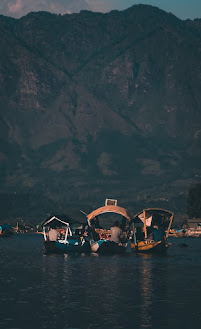HISTORY OF KASHMIR
Kashmir is one of the most controversial topics of all time and there are many confusions about Jammu, Kashmir and Ladakh. To understand the dispute of Kashmir, we first have to understand the history of Kashmir. But before that, if you are new to my blog I recommend you to go through my previous blogs at https://samarthchakrawartiblog.blogspot.com/.
Key highlights of this blog
- History of Kashmir
- The accession of J&k with India
- Article 370
- Article 35(a)
- Abrogation of Article 370 and 35(a)
Kashmir came into the sight of human civilization quite early. It was opulent in its literature, music and culture to an extent that it was known as the silicon valley of that time. Kashmir and Ladakh were the centres of every trade route of ancient Time. The etymology of Kashmir is still uncertain but according to Christopher Snedden, the name of Kashmir could have been a shortened form of "Kashyap Mir" or Lake of Sage Kashyap. Rishi Kashyap is said to be the first King of Kashmir. According to Rajatarangini and Neelam Puran in 3rd Century BC, the great emperor Ashok promoted the message of Dharma. Since then many dynasties have ruled Kashmir.
In the year 855, utpala dynasty was in power, this was the time when literature was born in Kashmir, construction of temples was at the peak and many great poets and authors published their work, but soon after the death of Avantivarman, Hindu dynasty was getting collapsed due to the Mongolian invader dulcha. He attacked Kashmir and burned the villages, Mass killing of Buddhist and Hindus became a normal practice and he forced many Buddhist and Hindus to accept Islam as their religion and soon after this Rinchan became the first Muslim ruler of Kashmir. For a long time, there was only Muslim rule in Kashmir. During this time, Islamicization was at a peak and this went on until Aurangzeb was in power. He not only Dominated Hindu but Shia Muslims too. After the fall of Mughals, in 1752-53 Afghani's took the charge of Kashmir and ruled the state for more than 60 years. They also tortured the local population of Kashmir and when the situation became intolerable, Maharaja Ranjeet Singh was called to save the people of the state. He sent his successor to Kashmir and this is how on 15 June 1819 Sikh dynasty came in power. At that time Laddakh, Aksaichin was a part of Kashmiri kingdom and the Last King of Kashmir was Maharaja Hari Singh. During the colonial rule also he managed the state very effectively. This was a quick history of Kashmir.
Now let's understand how did Jammu and Kashmir become part of India. After the partition of India, Maharaja Hari Singh wanted J&K and Ladakh as a separate nation. But after the independence, Pakistan's army invaded Kashmir in the attire of tribals and attacked Local Kashmir population, To save its people, Maharaja Hari Singh sought help from India. In reply, Sardar Patel asked the king to sign the instrument of accession so that Indian army can fight Pakistan. On 26 Oct 1947, Maharaja Hari Singh agreed to the terms and conditions of the instrument of accession and merged the state of Jammu and Kashmir in India. Now officially Pakistani troops were under Indian territory, Indian army and airforce were able to free the 50% of the occupied land and was in the direction to regain the remaining part of the occupied Kashmir. But Jawaharlal Nehru, out of nowhere declared a one-sided cease-fire (ceasefire: a temporary suspension of war or युद्ध विराम). On the other hand, Sardar Patel was totally against Nehru's decision. Patel wanted that India should reclaim every inch of Jammu & Kashmir, and Nehru argued that we will not indulge in any kind of war. This resulted in the origin of the Line of Control (LOC). Then Nehru took this matter to the UN (united nations) and they gave minimal efforts in understanding the problem and called Jammu and Kashmir as "disputed territory". This is how land beyond the line of control became POK "Pakistan occupied Kashmir". In the image shown below, you will have a clear idea about the geographical dispute of Kashmir.
(in the image shown above part of Aksai chin is captured by China which will be discussed in upcoming blogs.)
Why did Pandit Nehru declare one-sided Ceasefire? This will always remain controversial. Moreover, he did not listen to his Home minister and Army General also. This is how Kashmir became a disputed territory. But how did Section 370 and 35(a) came into existence is a different part of the story, which will be discussed in the next part of this blog.
If you are new to my blog, don't forget to check the links of my previous blog, which are provided below and do subscribe for post notifications.
THANK YOU FOR READING
JAI HIND







Comments
Post a Comment